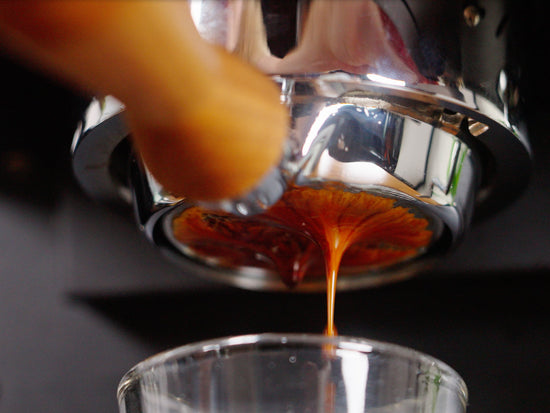Pulling the Longest Espresso Shot

Espresso has rules. Or at least, it feels like it does. Scroll through any espresso forum and you'll see the same advice repeated: keep your shot time between 25 and 30 seconds...maybe 40 seconds at the longest. That's what espresso is supposed to be: round, balanced, and punchy—no space for deviating from the classic 1:2 ratio. This is just one example of a common prescriptive notion when brewing espresso. There aren't any hard and fast rules for espresso, and if anyone tells you there are, you can pretty much discount their opinion.
But what happens if you slow things down? Really slow things down. Could you pull a two-minute shot that actually tastes good? That's the challenge we set for ourselves with the help of the LUCCA Tempo and its trusty flow control paddle.
Armed with Peruvian La Danta from The Great North Coffee and an Eureka Mignon Oro Single Dose, we went on a significant side quest to see just how long we could stretch a shot and whether the results would be drinkable. The goal: make a two-minute shot taste good.

Round 1: Grind Finer
When in doubt, grind finer. It's the first trick in any barista's book, so that's exactly where we started: the same dose, temperature, and a finer grind to slow the extraction.
The result? About what you'd expect. It was overextracted, unbalanced, and a reminder that you can't brute-force your way to a two-minute shot with grind size alone. We also got massive channeling.
Once we got the espresso relatively tamed, it was a rough go. It was not as rough as we initially thought, but man, was it bitter. This also illustrates the limitations of a refractometer. The TDS reading was about 6.5%, with an extraction percentage of about 19.5%, suggesting we're close to where we need to be. So, we needed to return to the drawing board and decide what to do next. Always trust your tongue.
Round 2: Reduce Pressure & Temperature

Next, we got a little more strategic. Thanks to the Tempo's flow control, we dropped the pressure to 4 bars, slowing things down while lowering the brew temperature to 190°F.
The thinking here is: If you're going to stretch a shot this long, treat it like slow cooking—low and steady. This "crock pot shot" brought us closer to the mark, with flavors that were at least moving in the right direction. But there was still something holding the shot back. It was smoother on the front end, but the taste was still not great. The flavors were very much muddled.
What surprised us was that the TDS and extraction percentage were almost similar to the previous shot, but the flavor was wildly different. We did get channeling with the second shot, which could be the x-factor in getting better coffee in the next round.
Round 3: Everything but the Kitchen Sink

At two minutes, channeling becomes the enemy. The longer the extraction, the more time water has to sneak through weak points in the puck. To fight back, we threw every tool at the problem:
-
Paper filter under the puck
-
Puck screen on top
-
Deeper basket with a larger dose
-
Slightly coarser grind to balance it all out
These tools combined added a bit more resistance to the puck, making the two-minute shot more stable throughout the extraction. The result? Finally, something resembling a proper long shot, some brightness came through. The pear note came through, albeit slightly. Balanced? Maybe not. Interesting? Absolutely. It tastes okay, but it's still not ideal. However, it is actually enjoyable compared to the previous two shots. We wouldn't call it espresso, though.

Why Bother?
Part of the joy of espresso is pushing the boundaries of what's possible. With a flow control machine like the LUCCA Tempo, you can experiment with wild profiles, stretch your extractions, and test ideas beyond the standard playbook.
Did our two-minute shot rival a classic 1:2 in 30 seconds? Not exactly. But it showed us how much control and flexibility modern machines give home baristas. The next time you dial in, don't be afraid to take a detour; you might discover something delicious or, at the very least, learn why the guidelines exist in the first place.